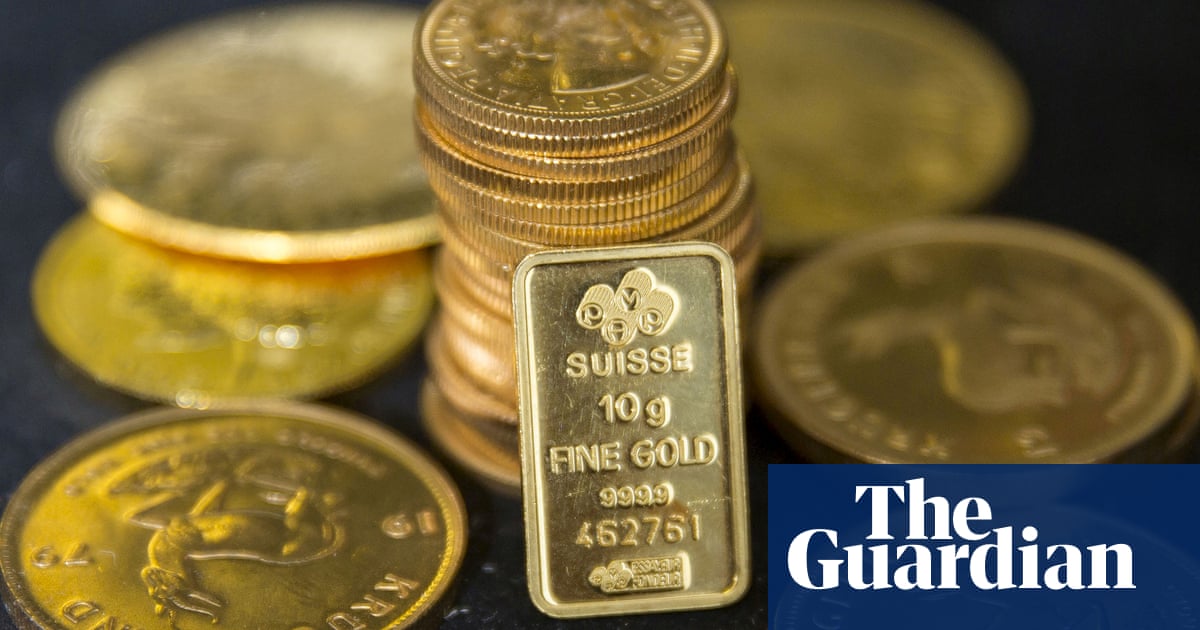Gold has risen above $3,500 an ounce for the first time while many stock markets are in the red and the US dollar hit a three-year low, after Donald Trump’s blistering attack on the Federal Reserve chair,Jerome Powell, caused alarm among investors.
Spot gold reached the record price on Tuesday morning, extending a rally that has pushed bullion up from $2,623 an ounce at the start of this year. Analysts now predict the metal could even reach $4,000 only a matter of weeks after the price moved through $3,000 for the first time.
The US currency and its government debt are usually seen as a safe haven during times of market turmoil, but as America itself has caused much of the recent volatility investors have been turning to another “port in the storm”, gold, in large numbers.
An ongoing exodus from US assets has led tostocks on Wall Street suffering further heavy losseson Monday. The Dow Jones – which lost close to 1,000 points, a 2.5% drop – is headed for its worst April since 1932.
Traders are anxious after the US president intensified his attacks on America’s top central banker,calling Powell “Mr Too Late” and “a major loser”for not lowering interest rates.
This pushed the dollar down against a basket of currencies to its lowest level since March 2022 on Tuesday morning, although it was later trading slightly higher.
Russ Mould, investment director at AJ Bell, said: “Persistent comments from PresidentDonald Trump, which put the independence of the US Federal Reserve in question, resulted in weakness in the dollar, US Treasuries and Wall Street overnight.
“If the administration is able or willing to follow through on its threat to fire Fed chair Jerome Powell before his term is up next year, it could provoke an even stronger reaction amid fears about the implications for inflation.”
The pound hit a seven-month high of $1.3423 on Tuesday and is on track for its longest winning streak against the dollar in more than 50 years. Sterling has risen against the dollar for 10 days, gaining 3.5% since“liberation day”on 2 April, when Trump announced sweeping global tariffs.
Stephen Innes, managing partner at the Swiss wealth management firm SPI Asset Management, said: “This is about more than Trump vs Powell. It’s about every corner of fiscal and monetary policy flashing one big red warning: confidence erosion.”
Sign up toBusiness Today
Get set for the working day – we'll point you to all the business news and analysis you need every morning
after newsletter promotion
Many Asian stock markets followed Wall Street lower; in Europe, the German, French and Italian indices lost between 0.2% and 0.6%. The UK’s FTSE 100 and Spain’s Ibex were up slightly, by 0.2% and 0.3%.
Stock futures are pointing to modest gains on Wall Street when US markets open, after Monday’s sell-off.
